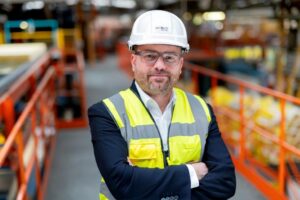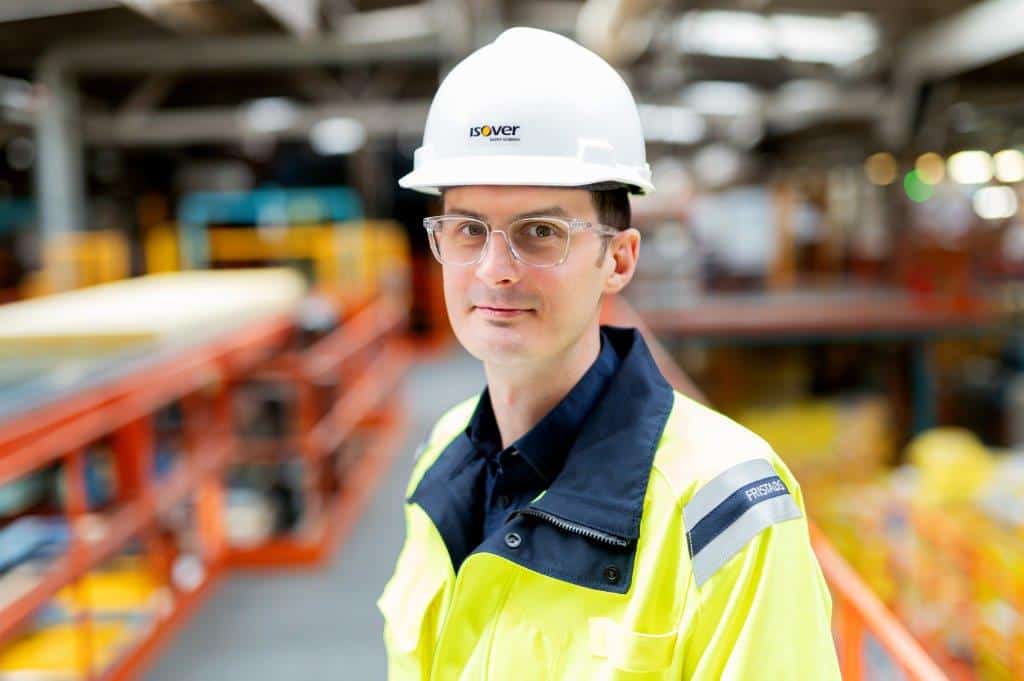Over 70 million Polish zlotys is the cost of the hybridization of the furnace at the glass wool factory in the Gliwice plant of Isover, a brand belonging to the Saint-Gobain Group. The investment increases the plant’s production capacity while reducing CO2 emissions. This is the first project of its kind within the Group worldwide and the most important in Gliwice for the last one and a half decades.
The investment has allowed for an approximate 10% increase in production capacity. It will also have a decisive impact on the reduction of CO2 emissions produced by the plant. The initial results in terms of reducing gas consumption per ton of production are very promising and allow us to state that the new technology will enable a reduction of up to 6% in CO2 emissions per ton of product produced. This is another step towards fulfilling the declaration made by the Saint-Gobain Group, the owner of Isover, at the UN Global Compact Summit in 2019 regarding the complete reduction of net CO2 emissions by 2050.

“Increasing production capacities while simultaneously reducing carbon dioxide emissions is the definition of how we understand the idea of sustainable development in practice. This is the largest and most important investment in our plant in 15 years,” says Michał Zakrzewski, Deputy General Director for Operational Affairs of Saint-Gobain Construction Products Polska, Director of Sustainable Development Saint-Gobain in Poland.
Hybridization, like in the case of cars, means more than one source of power. The furnace used for glass melting, the main ingredient of glass wool, heated with gas so far has gained an additional source of power – an electrode system.
The electrical energy to power the electrodes of the new hybrid furnace from 2025 will be covered by origin guarantees from renewable sources as part of the vPPA (Virtual Power Purchase Agreement) contract signed by the Saint-Gobain Group in Poland and will come from wind farms located in Poland.
One of the most complex investments in the history of the Gliwice Isover plant also forced a series of modifications to the production line.
“We had to adapt all installations to the increased efficiency of the new furnace. The combined forces of Isover employees and specialists from external companies, nearly 200 people in total, worked together for 12 weeks. Hybrid heating is more efficient, additionally, it does not require far-reaching modification of the production hall building, and above all the furnace structure,” explains Adam Marchacz, Factory Director of ISOVER in Gliwice.
The hybridization of the furnace in Gliwice is the first investment of this type in the global structures of the Saint-Gobain Group. Almost 800 million zlotys have been invested so far in the Gliwice plant of Isover.
“I am pleased that this pioneering investment on a global scale is taking place in Poland and is another element in the strategy of reducing carbon dioxide emissions at our plants. An additional satisfaction is the fact that the effects of this investment project go far beyond our plants – the glass wool produced in Gliwice used for insulation of buildings allows their owners – companies and individuals, to save energy for heating them in winter and maintaining a pleasant coolness in summer, thereby additionally contributing to the reduction of CO2 emissions in the life cycle of buildings,” concluded Joanna Czynsz-Piechowiak, President of the Saint-Gobain Group in Poland and Ukraine.
